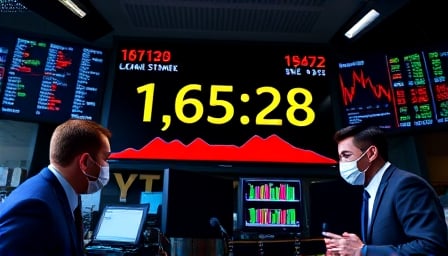Euro‑Yen Dynamics Amidst Divergent Economic Signals
The Euro‑Japanese Yen pair has settled near 172.74 after a recent 52‑week high of 173.873, underscoring the currency’s sensitivity to a complex mix of European economic data and U.S. market sentiment.
European Fundamentals: Trade Balance and Industrial Output
The latest German trade‑balance figures for July, released on September 8, project a modest +15.2 billion EUR surplus, slightly below the +14.9 billion EUR forecast. Exports are expected to rise 0.5 % versus a 0.8 % rise last month, while imports are forecast to decline 1.0 % compared to a +4.2 % increase previously. The tightening trade dynamics signal a slowing momentum in the euro area’s external sector, a factor that tends to lift the Euro against risk‑off currencies such as the Yen.
Simultaneously, German industrial production data for July and the energy‑generation profile are set to be released at 08:00 local time, promising further insight into the euro zone’s manufacturing resilience. A stronger industrial outlook would reinforce bullish sentiment on the Euro, whereas a contraction could fuel Yen demand as a safe‑haven.
U.S. Market Sentiment: Job Data and Rate‑Cut Expectations
Across the Atlantic, U.S. equity markets have been swept up in a paradoxical mix of optimism and caution. Weak August employment figures—reported to show a clear cooling in the labor market—have shifted investor focus toward potential Federal Reserve rate cuts in the near future. Wall Street’s recent record highs were driven by falling bond yields, yet the August data have re‑emphasized concerns about the U.S. economic trajectory.
For the EUR/JPY pair, this duality matters: a dovish U.S. stance can elevate the Euro by reducing carry‑trade pressure on the Yen, while a persistent risk‑off environment in the U.S. tends to strengthen the Yen. The net effect will hinge on which narrative dominates market expectations in the coming days.
European Political Uncertainty
European equity markets have exhibited leisurely gains, punctuated by a late‑day sell‑off influenced by France’s looming fiscal crisis and the forthcoming confidence vote involving President François Bayrou. Market participants remain wary, fearing that political instability could undermine the euro zone’s recovery trajectory. Any escalation in uncertainty is likely to pressure the Euro, while calm political developments could bolster it.
Technical Snapshot
- Close Price (2025‑09‑04): 172.741
- 52‑Week High (2025‑07‑27): 173.873
- 52‑Week Low (2025‑02‑27): 154.813
The pair sits well above its 200‑day moving average, yet remains within a historically volatile range, indicating that short‑term volatility could persist as markets digest the above fundamentals.
Outlook
- Euro‑Yen Trajectory: Likely to stay in a narrow band if German trade and industrial data remain muted. Any upside breakout will require stronger-than‑expected euro‑area growth or a decisive U.S. policy shift.
- Risk Appetite: Driven by the interplay of U.S. employment data and European political risk. A sharp change in either domain could trigger a swift swing toward the Yen.
- Key Levels: The 172.00 mark serves as a psychological support; a break below could signal a Yen rally, while a move above 173.50 may confirm a Euro‑strengthening trend.
In conclusion, the Euro‑Yen corridor is shaped by a confluence of modest European trade gains, cautious U.S. labor market signals, and lingering political fragility across the euro zone. Traders will need to monitor the upcoming German industrial releases and U.S. policy commentary closely to gauge the pair’s near‑term direction.
